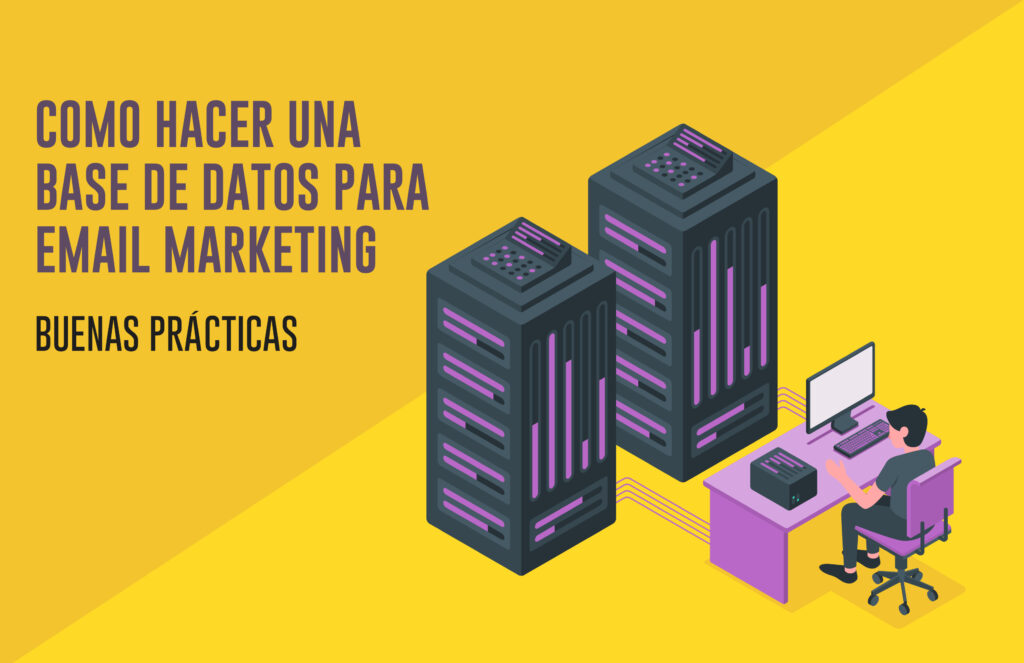How to Create a Database for Email Marketing: Best Practices
the 11 of April of 2024
the 11/04/2024
Having a database is essential for establishing a connection with users, providing value to them, and building their loyalty. If you want to learn how to create a database for email marketing, this article will explain a series of best practices to achieve excellent results.
According to the 2023 CX Trends Report by Zendesk, 75% of business owners aim to provide customer service that is more conversational and less transactional. And precisely, using databases correctly allows you to reach that goal.
TABLE OF CONTENTS
How to Create an Email Marketing Database Step by Step
In email marketing, a database acts as a centralized repository of valuable information that allows companies to segment contacts and send personalized emails tailored to the interests of the target audience. However, to achieve this, it’s key to focus on building a database with quality contacts by following these steps:
1. Set the goal for creating your contact list
Before you start, it’s crucial to clearly define what you want to achieve. Do you want to increase sales, promote new products, or strengthen relationships with existing customers? Defining the goal will help you focus your efforts and contact acquisition strategies effectively.
2. Define your contact information
Identify what information is relevant and necessary for carrying out your email marketing actions. This may include names, email addresses, demographic data, purchase history, and product or service preferences. Knowing what you want to collect will allow you to design your subscription forms and data acquisition tactics more precisely.
3. Choose where and how you will obtain customer data
Nowadays, you have various tactics at your disposal to capture users that will help you shape your own solid database, and most importantly, with the consent of its members:
- Email Surveys: These can be designed to understand recipients’ preferences, needs, or feedback. The data collected will help you better understand your audience and segment your database more effectively.
- Promotions, Prizes, and Sweepstakes: Offer your followers the chance to win something in exchange for sharing their contact information. This tactic is particularly effective for businesses that operate mainly online.
- Through a Newsletter: By offering a subscription to your regular newsletter via your website, blog, or social media profiles, you can capture the attention of visitors interested in receiving regular content from your brand. This is one of the most effective methods for creating a database.
- Subscription Forms: These can be placed in multiple locations, such as your website, blog, or a landing page. They typically request basic information like name and email address.
- Social Media: You can post links directing users to a landing page with a subscription form or run exclusive contests or sweepstakes for your followers, where they must provide their email address to participate.
4. Include Your Ecommerce Consumers
If you have a business operating online, it’s essential to include your existing customers in your database. You can use the information you have about their purchases to segment your list and send personalized messages based on each customer’s history and preferences.
Take advantage of the opportunity to collect their contact information during the purchase process, but with their explicit consent to send marketing communications via email. This is crucial for complying with privacy and data protection regulations such as the GDPR.
5. Use Automation
Use an email marketing platform that allows you to automate data capture and subscription management, as MDirector does. With the Marketing Automation tool, you can set up automated workflows to send welcome messages, subscription confirmations, and abandoned cart reminders, helping you save time and maintain effective communication with your contacts.
6. Update Information and Maintain List Hygiene
With MDirector, you can implement mechanisms for contacts to update their preferences or personal data. Additionally, you can conduct regular maintenance to remove inactive users, correct invalid email addresses, or clean up the contact list. This way, you can achieve a quality database and avoid delivery and reputation issues while managing unsubscribes and bounces automatically.
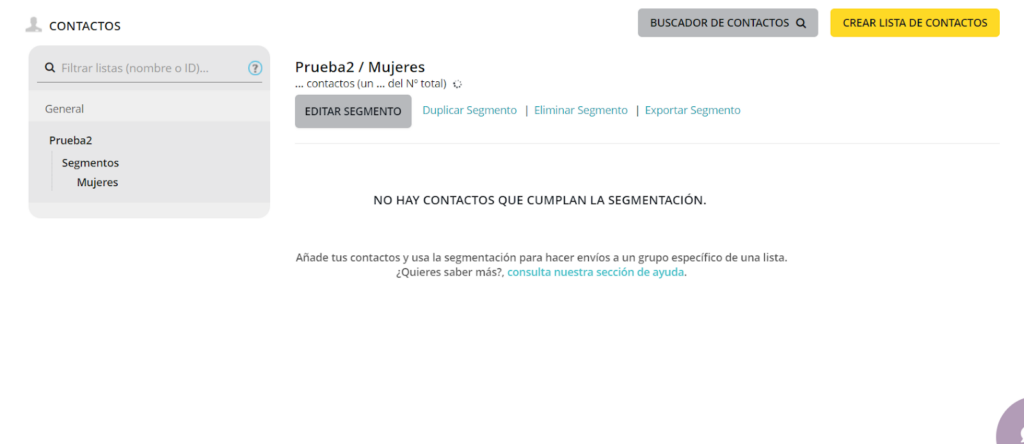
Segmentación de la base de datos
Additionally, there are other important features for creating and managing the database, such as the contact reputation system, campaign reports, A/B testing, integration with other marketing tools, and compliance with legal data protection regulations.
7. Ensure Clear and Explicit Consent to Comply with Regulations
It is crucial to obtain clear and explicit consent from users before adding them to your database. This way, you’ll not only comply with privacy and data protection regulations but also ensure that your message reaches an interested and engaged audience.
8. Conduct A/B Testing
Perform A/B tests to determine which types of messages, CTAs, or subject lines generate the best results. Use the data collected to optimize your email marketing campaigns and improve the conversion rate of your database.
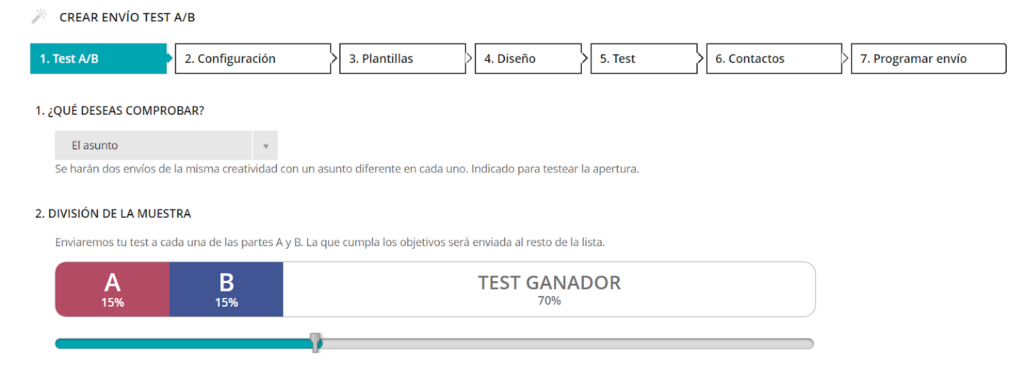
Test A/B
9. Integrate Analysis and Tracking to Improve
Use analytics and tracking tools, like those offered by MDirector, to monitor the performance of your email marketing campaigns and understand your subscribers’ behavior. This will allow you to adjust your strategy and improve specific areas for better results.
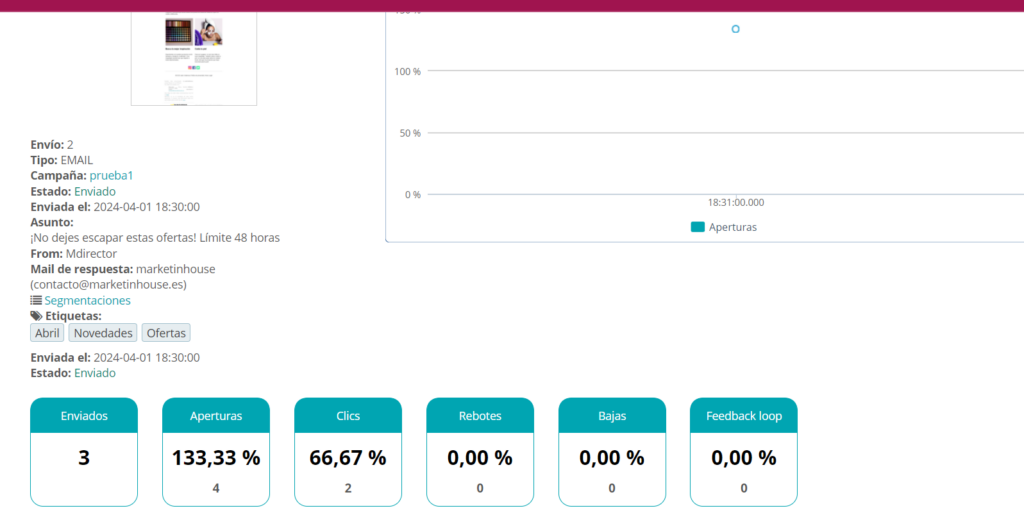
Seguimiento de los resultados de email marketing
10. Incentivize Subscriptions with Offers or Exclusive Content
Offer incentives like discounts, promotions, or exclusive content in exchange for subscriptions to your email list. This will encourage users to sign up, increasing the conversion rate of your database.
11. Provide Clear Unsubscribe Options to Respect User Preferences
Always include clear unsubscribe options in all your emails, so you’ll not only respect users’ preferences and privacy regulations but also avoid spam complaints, as they can easily unsubscribe if they wish.
12. Use Re-Engagement Techniques to Reactivate Inactive Subscribers
Implement re-engagement techniques, such as personalized emails with special offers, to reactivate inactive subscribers and keep your database active and engaged.
How to dend an email to your database
Sending an email to your database is a simple and secure practice through MDirector. To do this, you need to go to the list functionality, from where you can start the entire process of managing and sending emails to multiple people. Just follow these steps:
1. To create contact lists, you must access the “Email Marketing” section.
2. In the “Contacts” tab, you can create the list.
3. The next step is to import your database. There are three ways to do this: manually, by copying and pasting, or in bulk from documents in Excel, CSV, or TXT format.
4. The next step is to go to “Create Sending.” There, you must complete the entire configuration of the sending, including subject, personalization, sender, etc.
5. Then, you can use an MDirector template or import one of your preferences.
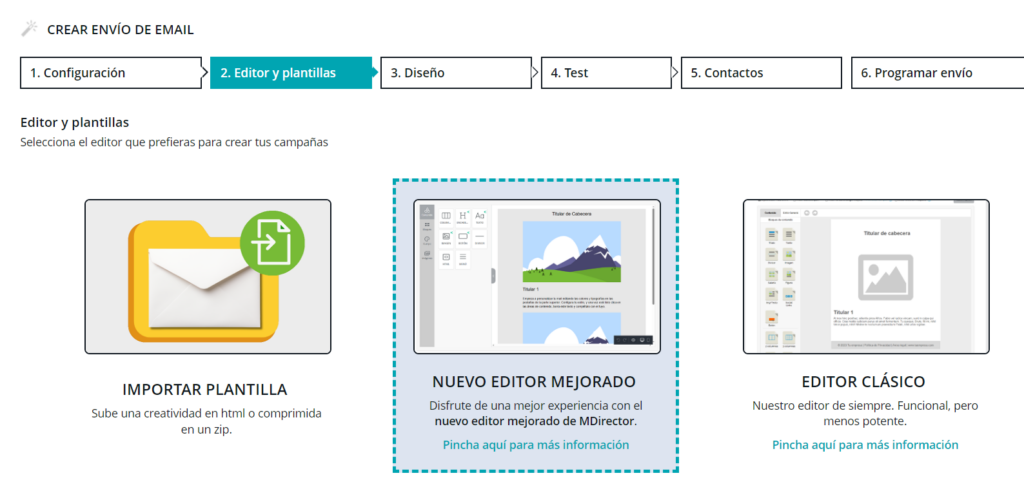
Plantillas para email marketing
6. Once designed, you can perform anti-spam tests. MDirector integrates SpamAssassin, which gives your sending a score to determine if it will pass spam filters.
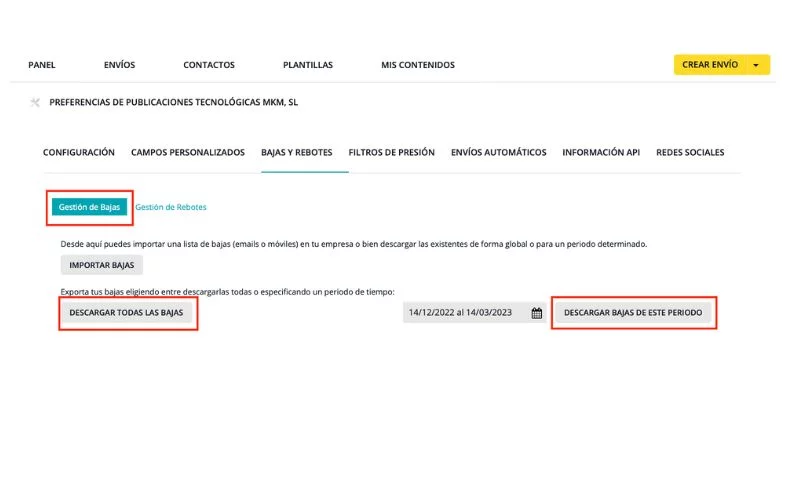
Selección de contactos para email marketing
7. Select the list to which you will send the email. Choose segmentation if necessary. You also have the option to cross lists or exclude lists from the sending, so the content reaches the target audience.
8. Review your parameters and send it immediately or schedule it.
5 Advantages of Creating a Quality Email Marketing Database
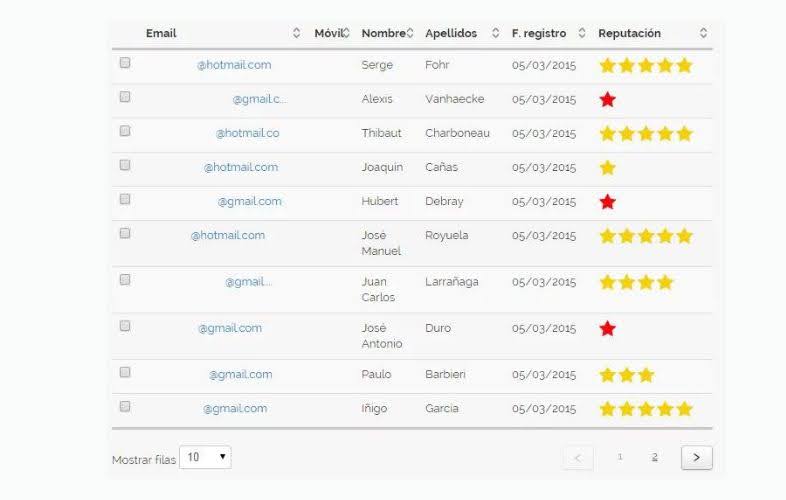
Base de datos para email marketing en la plataforma de MDirector
These are the main benefits you can gain by creating your own quality database by following the mentioned practices:
- Increase Sales: With a well-managed contact list, it’s possible to boost commercial transactions. How? Through relevant messages that capture the user’s attention, personalized promotions, or by recovering customers who have left items in their cart with personalized reminders to encourage them to complete the purchase process.
- Improve Support Services: If support agents have more information about customers through an updated database, they can enhance the user experience.
- Keep Customers Continuously Informed: By considering their interests, you can ensure they receive information that is relevant to them.
About Purchasing Email Databases
Purchasing email databases might seem like a quick way to expand your contact list, but it’s essential to be cautious with this practice. The main concern is the lack of transparency regarding how these data were obtained. Without knowing the origin and method of data collection, you face significant risks such as high bounce rates, low open rates, and potential spam complaints that could damage your business’s reputation.
Moreover, acquiring data without the explicit consent of the users is not only ethically questionable but may also violate privacy and data protection regulations, such as the General Data Protection Regulation (GDPR).
It’s essential that any database has been legitimately obtained with the full consent of the individuals. Building your own contact list legally and ethically is not only safer but also ensures you’re communicating with people who have a real interest in your offering.
In short, focusing on developing your own high-quality database should be the core of your email marketing strategies. Once you have a solid and legally compliant database, you’ll be in an optimal position to launch effective campaigns.

